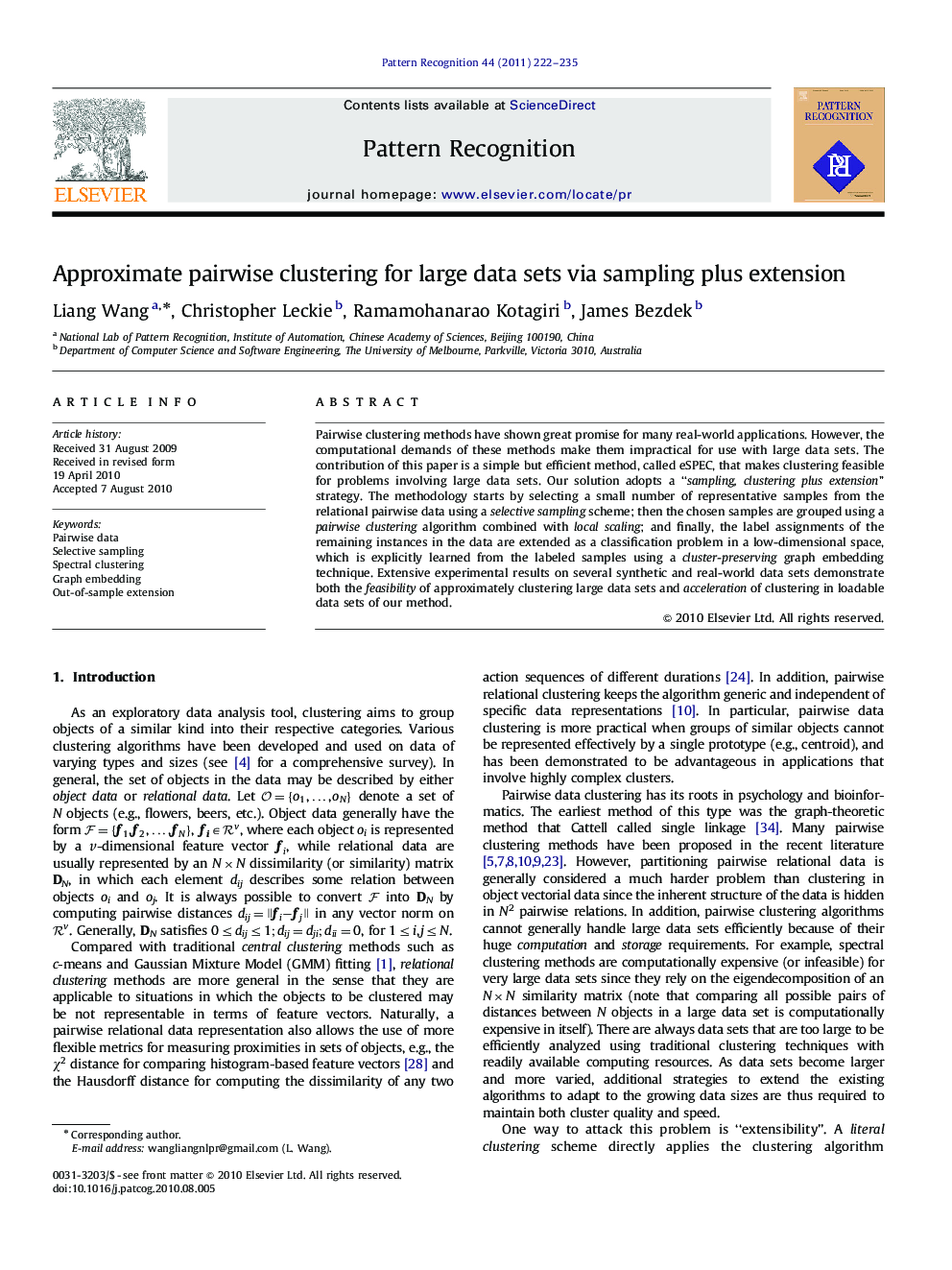| Article ID | Journal | Published Year | Pages | File Type |
|---|---|---|---|---|
| 530357 | Pattern Recognition | 2011 | 14 Pages |
Pairwise clustering methods have shown great promise for many real-world applications. However, the computational demands of these methods make them impractical for use with large data sets. The contribution of this paper is a simple but efficient method, called eSPEC, that makes clustering feasible for problems involving large data sets. Our solution adopts a “sampling, clustering plus extension” strategy. The methodology starts by selecting a small number of representative samples from the relational pairwise data using a selective sampling scheme; then the chosen samples are grouped using a pairwise clustering algorithm combined with local scaling; and finally, the label assignments of the remaining instances in the data are extended as a classification problem in a low-dimensional space, which is explicitly learned from the labeled samples using a cluster-preserving graph embedding technique. Extensive experimental results on several synthetic and real-world data sets demonstrate both the feasibility of approximately clustering large data sets and acceleration of clustering in loadable data sets of our method.
